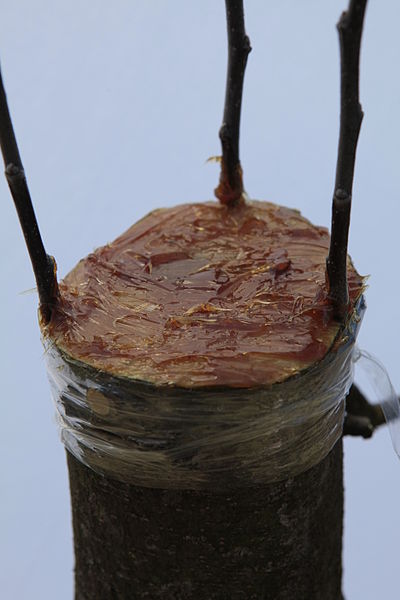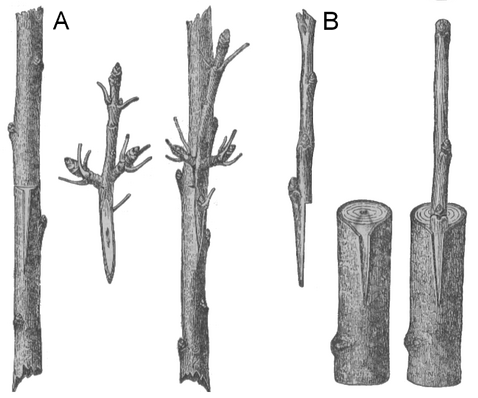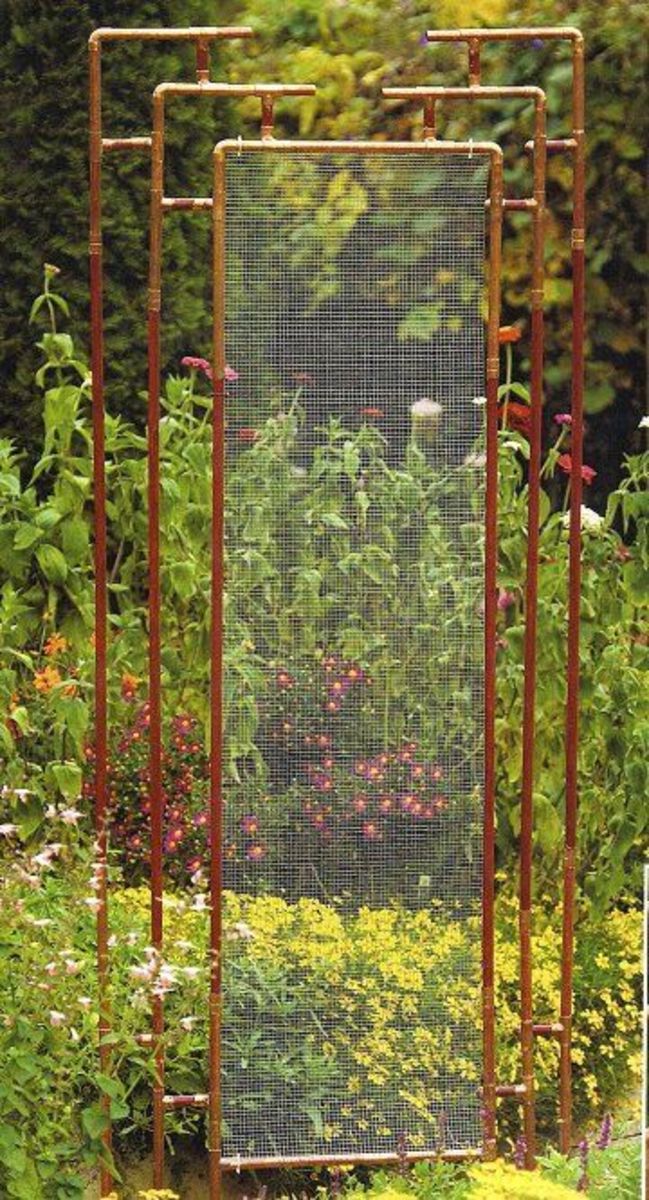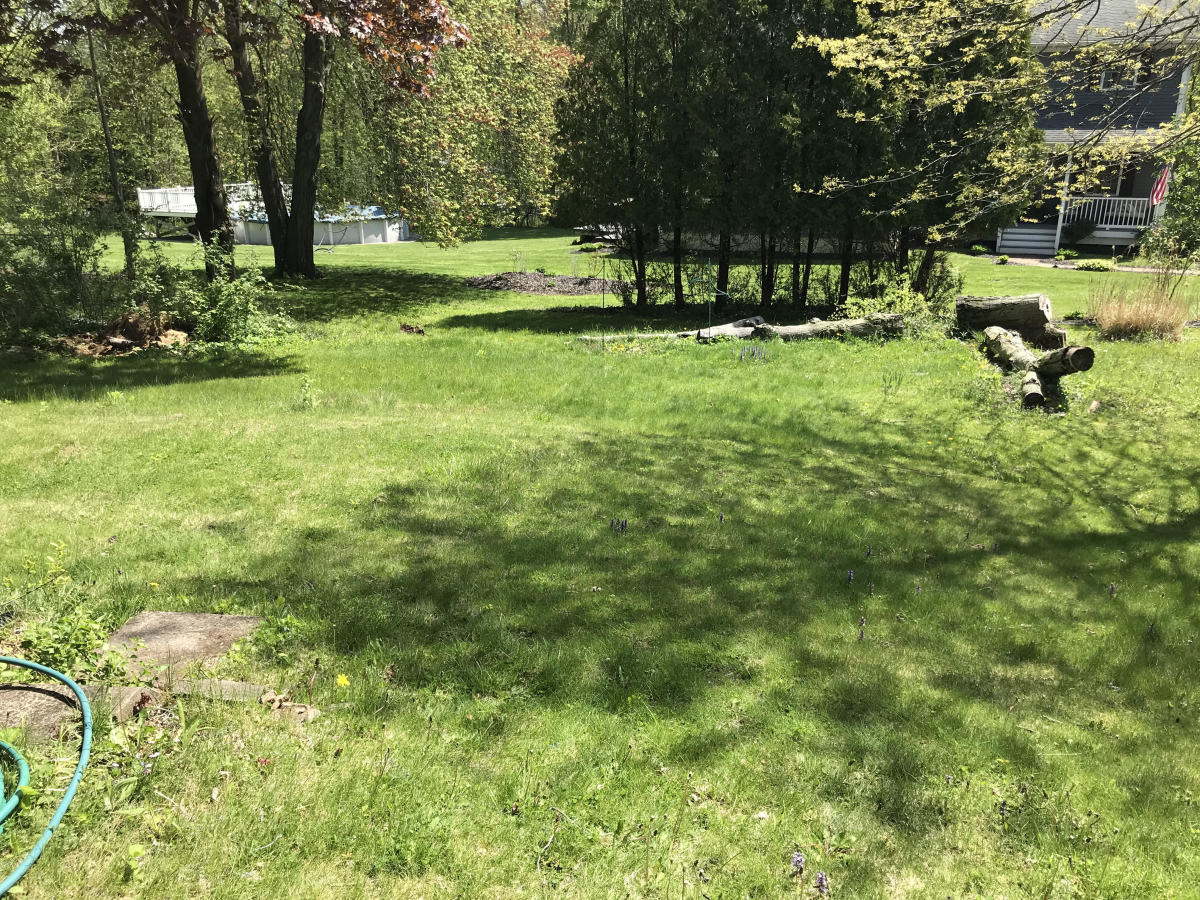The Art of the Graft
A graft using plastic wrap, though the author prefers the use of cotton gauze or other similar, more easily degradable products.

What is Grafting?
The art of the graft in some circles, means the ability to con someone out of something … it needs to be noted in the very beginning that this is not the purpose of this article. In this article, careful consideration will be given to agricultural grafting … the idea of planting a branch or stem from one plant on to the stem or branch, or even on to the bough of another plant.
|
The Importance of Grafting
Grafting, for the purpose of this article, refers to the ability to clip a branch, a stem or even a bough from one plant and graft it to the branch, stem or even to the bough of another plant. The practice is most common through the grafting of branches, though it can be possible to replace the main bough or trunk of the plant(s) being grafted as well. This concept is oft overlooked by people moving from one homestead to another or looking to move to a different part of the country or the world. Plants that grow exceedingly well in one location, may not fare so well in others. More particularly and importantly, some of the more well-favored species of fruits may grow better in some areas of the country than in others. In many cases, it may be that these favored varieties will not grow at all in their original form at the new location. In such cases, it is often possible to create hybrid varieties that not only thrive in the new location, but also provide all of the comfort and flavors of the previous location at the same time.
The art of grafting will require a lot of testing and playing around to perfect, but there are some aspects of grafting that are fairly common no matter what the ultimate purpose may be. Starting with smaller plants may be ideal as it will allow for the work to proceed much easier and at the same time, greatly reduce the time to realize the efficacy of the efforts undertaken. (Small plants tend to grow faster, so you should notice the results much quicker) Personally, I recommend using berries and berry bushes for the initial efforts of grafting on any homestead, though the reasons for this suggestion may be much more expansive than imagined at first glance.
When building a home off the grid or outside of civilized society, such an isolated location mat attract attention from both four-legged and two-legged visitors, some of whom may not have the best interests of the homesteader at heart. As a basic means of homestead security, one of the things I strongly recommend, in addition to windows being slightly more elevated than they would be in homes built within the city, are gravel and berry plants surrounding each and every structure on the homestead. Some animals have a natural defense against the thorns associated with most berry plants, though these animals tend to be more “substantial by volume” or heavier animals who will inevitably make a lot of noise as they crunch through the gravel. It has been said that there are people who can walk across flypaper and never have it stick to their feet, though it is reasonably safe to presume that people possessing such discipline and skills will not very likely be out snooping around the homestead. Even a deer will “crunch” as it passes through the gravel, so even those animals that remain unperturbed by the excessive amount of thorns protecting the house, will still create a stir when traversing through the gravel … and should subsequently wake up the dog inside the structure at least, if not the people there … allowing for the arrangement of a proper “welcome” for the intruder.
What types of berries grow most commonly in the local area? In the cities, it may be difficult to know outside of books and other reference and informational materials. In the country however, walking about and learning the surrounding areas should prove to be beneficial to the homesteader in numerous ways. Not only can the homesteader see first hand what grows locally, but should also be able to find local plants that are native or indigenous to the local ecosystem(s) and select some seedlings that can be planted around the existing structures or otherwise strategically located around the homestead property. These plants should serve as the first testing grounds for the inclusion of additional strains. Ideally, the plants selected should be dense with thorns, again, as much for defense against intruders as for anything else. Initial efforts undertaken at grafting, will likely consist of mostly local plants unless a greenhouse, starter house and other plant starter and growing facilities are already in place.
Tools of the Grafter
Grafting Tool for cutting both the “male” and “female” ends of the branches to be grafted Soft, biodegradable cotton thread or strips of biodegradable cotton cloth cut roughly one-fourth of an inch wide and in strips cut long enough to go around the grafted branch at least three to four full turns (Some people prefer rubber stripping. While the rubber stripping is decidedly easier to use in terms of holding the branches together while the wax and/or paraffin is applied, it does not tend to blend well into the heart of the tree that will be grown. The introduction of such a minute quantity of pollutant may seem inconsequential, but why not avoid it if possible?) Parrafin Wax, Bees Wax or other similarly natural adhesive products to cover the “wounds” of the graft and to ensure that the nutrients are being delivered to the grafted section Patience and an experimental nature
|
By Paunaro

How to Get Started
The first need is to become familiar with the grafting tool, figuring out the cuts and how the cut pieces will fit together. As is most always the case in such matters, there is a decidedly “male” cut and a decidedly “female” cut. Fortunately, in this particular case, that is not open to debate though it is certainly possible for people to call each piece whatever they wish … at the end of the day, they only fit together one way. While it may be very difficult to accurately measure the individual branches, and to cut off only those areas that match exactly, care should be taken, especially in the early phases of grafting, to select branches that are virtually the same in size and circumference. The cut portions should be placed together before the application of any foreign matter into the cuts or the branches. In short, don’t start waxing, greasing and tying everything up before the pieces are already in place. It is equally important to remember that as much of the bark as possible should be aligned. It is through the “bark” or “skin” or outer layer of the branch that much of the life-giving supplies of nutrients will be transported, so the more of this area that connects, the more nutrients will be allowed to reach the portion grafted in to the plant, thus allowing it to grow stronger, healthier and in the case of some plants, to bear more fruit.
Once the two pieces have been placed together in such a way that the largest possible sections of bark or “skin” are matched up on the two pieces being grafted together, two or three small balls or clumps of wax may be beneficial in holding the two pieces together while the string or rubber stripping is wrapped around the “wound” in such a fashion so as to hold the two pieces of the branch together. The purpose of the string or stripping is to firmly bind the two pieces into place so that there is no unnecessary movement while the “wound” heals and the growing process recommences between the grafted branches.
The purpose of the paraffin or wax is two-fold, with one purpose being to assist in holding the grafted branches together during the healing process. The other purpose is to prevent the plant from “bleeding out” where all of the sap or milk or other fluids of the plant are released through the cut portion of the graft. Any and all areas wherein the internal portions of the plant are exposed, should be coated with the parafin so that nothing other than the natural bark or skin of the plant is exposed. This should also serve to greatly reduce the amount of time needed for healing and for the recommencement of growth between the two grafted portions.
Can I grow Apples and Oranges on the same tree?
There are virtually no limits to the ability of the plants to take hold when they are grafted on to different species, though getting them to bear fruit may be a different matter. Plants however, like people, develop in accordance with their local environment and as such, grafting a bough from the desired species of apple variety onto the bough of a local species has proven to be very successful and beneficial as have similar studies with other types of fruits and other trees. Oranges and Tangerines or Lemons and Limes, different species that have the same growing environment may be substantially more likely to produce different types of fruits on the same tree.
|
What Will Work? (And What Will Not?)
The multiple varieties of berries planted around the home are a great place to start learning about grafting for a number of reasons, not the least of which is homestead security. However, grafting these plants can create a very beautiful and colorful addition to landscaping and provide fruits that can be used in a multitude of purposes. The ubiquitous jams and jellies are great, but one can also make wine for those relaxing evenings at home, brandy that has a bit more kick and a lot more uses other than drinking, and the berries and their resultant dyes can even be used to dye cloth and other materials to liven up the old homestead. It is also very beneficial to learn about the grafting techniques on these smaller and easier to handle plants. Once the art of grafting has been mastered in smaller areas, it is time to move on to bigger things … quite literally.
Plants, like people, become acclimatized to their local environment. For plants, this can mean that a particular variety, using apples in this case, has a much more prolific growth rate than other, remarkably similar varieties. If the particular variety that is much more productive locally is not the most desired or beneficial variety for whatever reason, grafting the bough of a new growth of the desired variety on to the bough of the more hearty local variant, will often provide the desired results, increasing the production levels and growth of the desired variety of apples.
Getting the graft to take hold will, after a little bit of practice, become one of the easiest parts of any ongoing research by the industrious homesteader. It may be very easy to get entirely unique species to grow on the same plant, but this will not always result in the production of fruits or other benefits. In some cases, portions of one species will tend to die off if they are not genetically equipped with the local environment. It is important to remember, especially when it comes to grafting plant life, that just because something can be done, does not mean that it should be, or even that it will ultimately be beneficial or result in the desired outcome. As such, it is imperative that if this is the desired result, testing be continued, not only to perfect the ability of the grafted branches and boughs to take hold, but to produce the desired results in those cases wherein it does prove to be possible.
Why are you talking like that?
Whether it is “sap” or “milk” or any other liquid inside of a plant, this serves in much the same fashion as blood in a human, transporting different materials to different portions of the plants. Thus, when grafting, you may hear the terms encompassing many of the same medical terms associated with humans such as “bleeding” and “wounds” and “healing”
|
What Do I Need to get Started?
Grafting Cutters come in all different sizes and varieties. While it is not always best to buy the cheapest particular tools just because the results are an unknown variable, it may not be a good idea to go to the other extreme and go out and buy all of the most expensive grafting supplies either. Care should be taken to ensure that the initial purchase include those grafting tools and supplies that will be necessary and useful during the initial efforts. The grafting cutters should be relevant to the size of the plants being grafted during the early phases of testing and experimentation. (Very few people are going to be trying to graft major boughs, especially one that span tens of inches or even feet across, so the actual sizes will be limited, but still have notable differences) It may be beneficial to start with the rubber tubing or other strips in the early phases as well, since it may be difficult to get the pieces to fit and hold in the ideal solution, especially with inexperienced hands in such matters. The paraffin should be all natural, and beeswax works equally as well, and some people, on larger grafts, (or even when topping larger trees) will actually use latex paint to cover the “wound” and ensure that any “bleeding” is kept to a minimum. For the average person however, a level of wax sufficient to make a couple of candles should be more than adequate for commencing testing, add that to a single roll of tubing or rubber strip, some cotton thread or cloth strips and a medium-priced, quality grafting cutter and the average homesteader should be quite capable of commencing operations even in the middle of the growing season.



